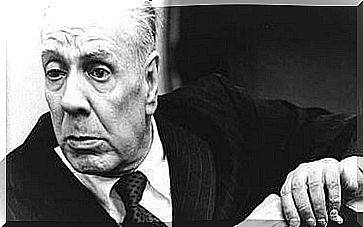The 5 Psychotropic Drugs That Changed History

Symptoms associated with mental illness stem from biological or environmental factors, but also from inappropriate behavior patterns. Although many mental health professionals practice psychotherapy, psychiatrists are trained as physicians. The latter can therefore prescribe psychotropic drugs as part of their treatment.
Psychotherapy and psychotropic-type drugs are both effective in the treatment of many psychiatric disorders. Often times, a combination of the two methods works best.
The birth of modern psychopharmacology dates back to the 1950s. It was during this time that a series of scientific discoveries forever changed the course of psychiatry but also the lives of millions of patients.
Although some of the following psychotropic substances are no longer commonly used, they have radically changed the therapeutic landscape. Indeed, they now allow psychiatry to treat disorders that were once considered incurable. Their discoveries are among the greatest advances in the history of medicine.

The most important drugs in the field of mental health
1. Psychotropic drugs that stabilize mood: Lithium carbonate
It was in 1948 that John Cade, an Australian psychiatrist, discovered that lithium could be used in the treatment of bipolar disorder. Indeed, lithium neutralizes uric acid. At the time, it was believed that the latter was responsible for dementia.
It turned out that bipolarity has nothing to do with uric acid. However, lithium is now of great help in relieving patients with this disorder.
This is how lithium became the first modern psychotropic drug. Its effectiveness as a treatment against dementia was demonstrated in 1949. Shortly before the discovery of chlorpromazine. Lithium then became the first drug specifically intended to treat a specific psychiatric disorder.
More than seventy years after its discovery, lithium remains the most effective drug in all of psychiatry. Its success rate is over 70% for patients with bipolar disorder. It also has interesting applications in the treatment of unipolar depression.
2. Psychotropics for psychotics: chlorpromazine
The somewhat accidental discovery of lithium in 1948 was followed soon after by another extraordinary discovery. It is the world’s first antipsychotic drug.
In 1949, Henri Laborit, a French military surgeon based in Tunisia, was looking for a way to reduce surgical shock. He was working on an antihistamine, chlorpromazine. He then discovered that the latter had profound psychological effects on patients when it was administered to them before an operation.
In 1952, Laborit succeeded in convincing a psychiatrist to administer this drug for the first time to a schizophrenic patient.
The use of chlorpromazine, the world’s first neuroleptic, has spread across Europe. However, in the United States, then “dominated” by psychoanalysis, its dissemination was more timid.
Indeed, at that time, American psychiatrists were looking for psychosocial explanations for schizophrenia. It was then about the theory of the “double bind” of Gregory Bateson. In this context, everything related to psychotropic products was therefore of little or no interest.
The pharmaceutical group that produces chlorpromazine (under the trade name Thorazine) has chosen to promote it to government institutions. And this, to the detriment of psychiatrists and medical schools. The argument then put forward was that this psychotropic drug could save government mental health programs considerable amounts of money.
Soon after, almost all of the major mental hospitals in the United States had subscribed to the use of chlorpromazine. The introduction of Thorazine to the United States contributed to the deinstitutionalization movement. Thus, the number of hospitalized patients rose from about 600,000 in 1952 to 160,000 in 1977.
Chlorpromazine remains one of the most effective antipsychotic drugs. This is especially true for critically ill patients. It has beneficial applications in emergency situations. Along with lithium, it is on the list of essential drugs published by the World Health Organization.
3. Psychotropic drugs to treat mood disorders: Imipramine
The third historical discovery that marked the beginnings of psychopharmacology is that of imipramine. The first tricyclic antidepressant.
The development of chlorpromazine, the first antipsychotic drug, was linked to research on antihistamines. The same is true for the synthesis of imipramine, the first antidepressant.
In the early 1950s, pharmaceutical companies were looking for new drugs to compete with thorazine in the schizophrenia market.
Roland Kuhn, a Swiss psychiatrist who was more interested in depression than schizophrenia succeeded. Then employed by the pharmaceutical company Geigy, he decided to act behind the back of his employer who was funding his research. He administered this compound in order to fight against depression. The results obtained represent a revolution for the time.
Only weeks after being given imipramine treatment, Kuhn’s patients with chronic depression began to regain motivation and hope. They responded very well to this new drug. Thus, their depressive symptoms, once considered incurable, have disappeared.
For many years imipramine has been considered the “gold standard” in the treatment of severe depression. Its regular use was then largely replaced by the new SSRIs and IRSNs. However, it is still useful today in the treatment of atypical and refractory depression.
4. Psychotropic drugs for anxiety and insomnia: Valium
Valium was discovered by chemist Leo Sternbach in Hoffman-La Roche, New Jersey in 1963. It is the second benzodiazepine discovered, after Librium, in 1960.
Benzodiazepines became very popular in the 1960s and 1970s as anxiolytics. This is because their side effects were much less than those of barbiturates, the previous generation of sedatives.
An overdose of barbiturates was indeed easily fatal. It is certainly for this reason that the popular belief remains that one can “kill oneself with sleeping pills”.
Benzodiazepines are only fatal in exceptional cases. The consequences of an overdose are rarely dramatic. However, they are highly addictive. They are both sedatives, anxiolytics and hypnotics. It all depends on the molecule in question, the dose and its half-life.

5. Medicines for mood: Prozac
Over the past 30 years, certainly no other psychiatric drug has made a name for itself like Prozac (fluoxetine). It was developed by Eli Lilly and Company in 1970 before marketing it in the United States. It was then one of the first SSRI-type drugs.
Since the introduction of Prozac, other SSRIs have emerged. Each with a slightly different chemical structure and a distinct side effect profile. However, they remain similar in their basic mechanism and efficiency. These drugs produce very few side effects and their range of actions and indications is very wide.
Examples of SSRIs include fluoxetine, fluvoxamine, paroxetine, sertraline, citalopram and escitalopram. The discovery of SSRI-type drugs is a real historical achievement in psychiatry. Today it is the most widely prescribed drug for clinical depression, anxiety disorders or obsessive-compulsive disorders.









